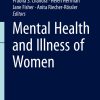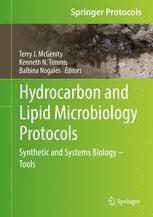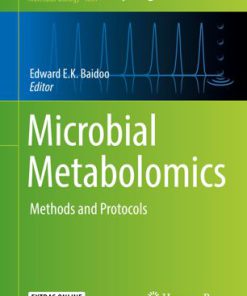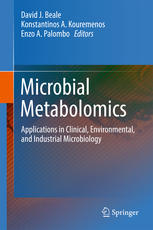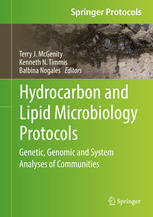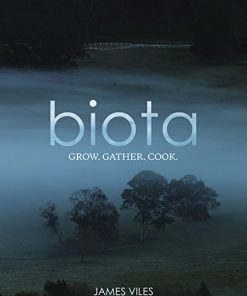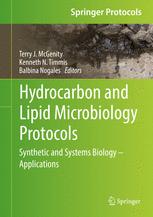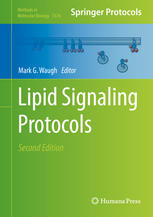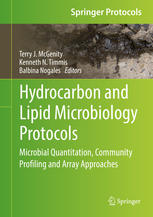Hydrocarbon and Lipid Microbiology Protocols Microbial Quantitation Community Profiling and Array Approaches 1st Edition by Terry McGenity, Kenneth Timmis, Balbina Nogales ISBN 3662527766 9783662527764
$50.00 Original price was: $50.00.$25.00Current price is: $25.00.
Hydrocarbon and Lipid Microbiology Protocols Microbial Quantitation, Community Profiling and Array Approaches 1st Edition by Terry J. McGenity, Kenneth N. Timmis, Balbina Nogales – Ebook PDF Instant Download/Delivery: 3662527766, 978- 3662527764
Full download Hydrocarbon and Lipid Microbiology Protocols Microbial Quantitation, Community Profiling and Array Approaches 1st Edition after payment

Product details:
ISBN 10: 3662527766
ISBN 13: 978-3662527764
Author: Terry J. McGenity, Kenneth N. Timmis, Balbina Nogales
This Volume presents methods for quantifying microbial populations and characterising microbial communities by extracting and analysing biomarkers such as RNA, DNA and lipids. The chapters cover a wide range of topics, including: cell separation from oil-rich environments, enumeration of hydrocarbon degraders and sulphate reducers using most-probable-number techniques, and quantification by means of real-time PCR. A variety of molecular methods are described for microbial community profiling, such as phospholipid fatty acid analysis, DGGE, T-RFLP and SSCP. One chapter examines high-throughput sequencing, and provides important information on the associated procedures required for thorough data analysis. A further chapter is devoted to the characterisation of protistan communities, while the closing chapter describes multiplex fluorescent antibody microarrays for detecting microbial biomarkers.
Hydrocarbon and Lipid Microbiology Protocols
There are tens of thousands of structurally different hydrocarbons, hydrocarbon derivatives and lipids, and a wide array of these molecules are required for cells to function. The global hydrocarbon cycle, which is largely driven by microorganisms, has a major impact on our environment and climate. Microbes are responsible for cleaning up the environmental pollution caused by the exploitation of hydrocarbon reservoirs and will also be pivotal in reducing our reliance on fossil fuels by providing biofuels, plastics and industrial chemicals. Gaining an understanding of the relevant functions of the wide range of microbes that produce, consume and modify hydrocarbons and related compounds will be key to responding to these challenges. This comprehensive collection of current and emerging protocols will facilitate acquisition of this understanding and exploitation of useful activities of such microbes.
Hydrocarbon and Lipid Microbiology Protocols Microbial Quantitation, Community Profiling and Array Approaches 1st Table of contents:
Introduction to Microbial Quantitation, Community Profiling, and Array Approaches
1. A Cell Extraction Method for Oily Sediments
- Introduction to the challenge of extracting microbial communities from oily sediments.
- Techniques and protocols for efficient cell extraction from complex sediment samples.
2. Introduction to Microplate MPN-Ennumeration of Hydrocarbon Degraders
- Overview of the Most Probable Number (MPN) method for quantifying hydrocarbon-degrading microbes.
- Advantages and limitations of the microplate format for MPN enumeration.
- Application of MPN in environmental samples, especially hydrocarbon-contaminated soils and sediments.
3. Primers for dsr Genes and Most Probable Number Method for Detection of Sulfate-Reducing Bacteria in Oil Reservoirs
- Introduction to dsr (dissimilatory sulfite reductase) genes as markers for sulfate-reducing bacteria (SRB).
- Role of SRB in oil reservoirs and their involvement in hydrocarbon degradation.
- Primer design for dsr genes and their application in MPN assays to detect SRB in oil reservoir environments.
4. Microbial Biomass and Community Analysis by PLFA Analysis
- Overview of Phospholipid Fatty Acid (PLFA) analysis for assessing microbial biomass.
- How PLFA can be used to profile microbial communities in hydrocarbon-contaminated environments.
- Interpreting PLFA data for understanding microbial diversity and community structure.
5. Real-Time PCR Approaches for Analysis of Hydrocarbon-Degrading Bacterial Communities
- Introduction to Real-Time PCR (qPCR) for quantifying specific hydrocarbon-degrading bacteria.
- Use of primers targeting key functional genes involved in hydrocarbon degradation.
- Benefits and limitations of qPCR in environmental microbiology, particularly in detecting low-abundance species.
6. Clone Libraries of Ribosomal RNA Gene Sequences for Characterization of Microbial Communities
- Overview of clone libraries as a tool for analyzing microbial diversity.
- Step-by-step process of creating and analyzing ribosomal RNA (rRNA) gene clone libraries.
- Application in identifying novel or rare microorganisms in oil-contaminated environments.
7. Denaturing Gradient Gel Electrophoresis (DGGE) for Microbial Community Analysis
- Principles of DGGE and its application in microbial community profiling.
- How DGGE can be used to resolve and compare complex microbial communities in hydrocarbon-contaminated samples.
- Interpretation of DGGE results and its potential for tracking community changes over time.
8. Microbial Community Profiling: SSCP and T-RFLP Techniques
- Single-Strand Conformation Polymorphism (SSCP): Methodology and applications in microbial community profiling.
- Terminal Restriction Fragment Length Polymorphism (T-RFLP): Overview, procedure, and utility in environmental microbial community analysis.
- Comparison between SSCP and T-RFLP in terms of sensitivity, specificity, and resolution.
9. Microbial Community Analysis by Single-Amplicon High-Throughput Sequencing (Metagenetics) – Preparation, Data Handling, and Ecological Analysis
- Introduction to high-throughput sequencing methods for microbial community analysis.
- Techniques for amplifying specific gene regions for sequencing (e.g., 16S rRNA, functional genes).
- Data processing and handling strategies: from quality control to ecological interpretation.
- Applications in studying microbial communities in hydrocarbon-contaminated environments.
10. Multiplex Fluorescent Antibody Microarrays and Antibody Graphs for Microbial and Biomarker Detection in the Environment
- Introduction to multiplex fluorescent antibody microarrays (mFAM) for simultaneous detection of multiple microbial species or biomarkers.
- How mFAM can be used to detect microbial communities involved in hydrocarbon degradation.
- Utilization of antibody graphs for interpreting environmental microbial data.
11. Studying Protistan Communities in Hydrocarbon-Contaminated Environments
- The role of protists in hydrocarbon degradation and their importance in contaminated environments.
- Methods for analyzing protistan communities using molecular tools.
- Challenges in studying protists in complex, hydrocarbon-contaminated environments and the potential ecological roles they play.
People also search for Hydrocarbon and Lipid Microbiology Protocols Microbial Quantitation, Community Profiling and Array Approaches 1st:
what is significant about hydrocarbons found in lipids (2)
is lipid an organic compound
handbook of hydrocarbon and lipid microbiology
a hydrocarbon is hydrophobic
lipid hydrocarbon chain
Tags:
Terry McGenity,Kenneth Timmis,Balbina Nogales,Hydrocarbon,Lipid Microbiology,Protocols,Microbial,Quantitation,Community Profiling,Array,Approaches 1st
You may also like…
Biology and other natural sciences
Microbial Metabolomics: Methods and Protocols Edward E.K. Baidoo
Science (General)
Cookbooks
Technique - Food Manufacturing
Biology and other natural sciences
Lipid Signaling Protocols 2nd Edition by Mark Waugh ISBN 9781493931699 978-1493931699
Biology and other natural sciences - Microbiology



